In the Studio: Samira Abbassy
“My attempt in depicting the human form is almost like a psychic x-ray, so the n...

Bethany Collins is a multidisciplinary artist and 2022 Joan Mitchell Fellow. We interviewed her about her work and creative practice in March 2023. The following is an edited transcript of that conversation.
Language is the subject and primary material for my work. I've also found it's a kind of prism through which to investigate other topics, in particular American history and the nuance of racial and national identities.
Any repository of language—encyclopedias from the eighties, dictionaries from the fifties, old newspaper archives, especially on microfilm as the information and technology are doubly outdated—is a reflection of us in a time and there's always something to be mined there. In materials with enough historical distance from the present, there is the possibility to make new sense. To understand the world now.
For instance, as the American Heritage Dictionary moved away from the typical staff and linguist oriented approach to a broader Usage Panel, controversies ensued. At various points, Dr. Maya Angelou, Carl Sagan, Antonin Scalia, and Joan Didion sit on the panel. And you can see the language shift over time because it's newly reflective of a broad swath of American voices. That churning of language, that's what piques my interest.
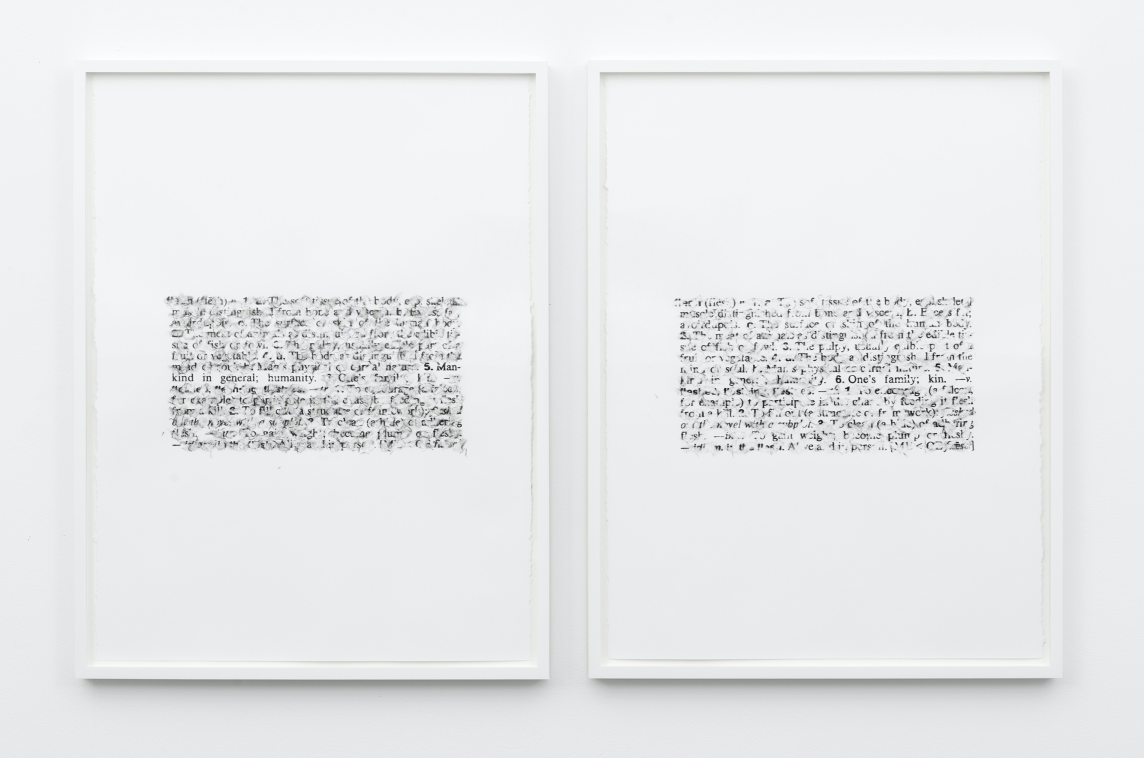
I'm always looking, initially, for a contradiction within language that feels as though it should have been settled by now. One of the first bodies of work that I made with language was a series of contronyms. Contronyms are words that contain their own opposite meaning. “Quiddity” is still my favorite. Quiddity is both the essence of something and a trifling nothing. It is everything, and it is nothing at the same time. As I was moving away from making work that was more directly identity-based, those poetic contradictions felt like a metaphor for racial identity. It is everything, and it is nothing, at the same time.
“Ravel” is another good contronym. It means to tangle something up and complicate it—or to simplify and make it quite linear, like a tangled ball of Christmas lights. You organize and simplify back into its original form.
So the text, which is always the starting point, has to be something that doesn't quite make sense. There must be a problem in the language itself, and I can highlight that for us, or I can shift the language to re-contextualize how we see it.
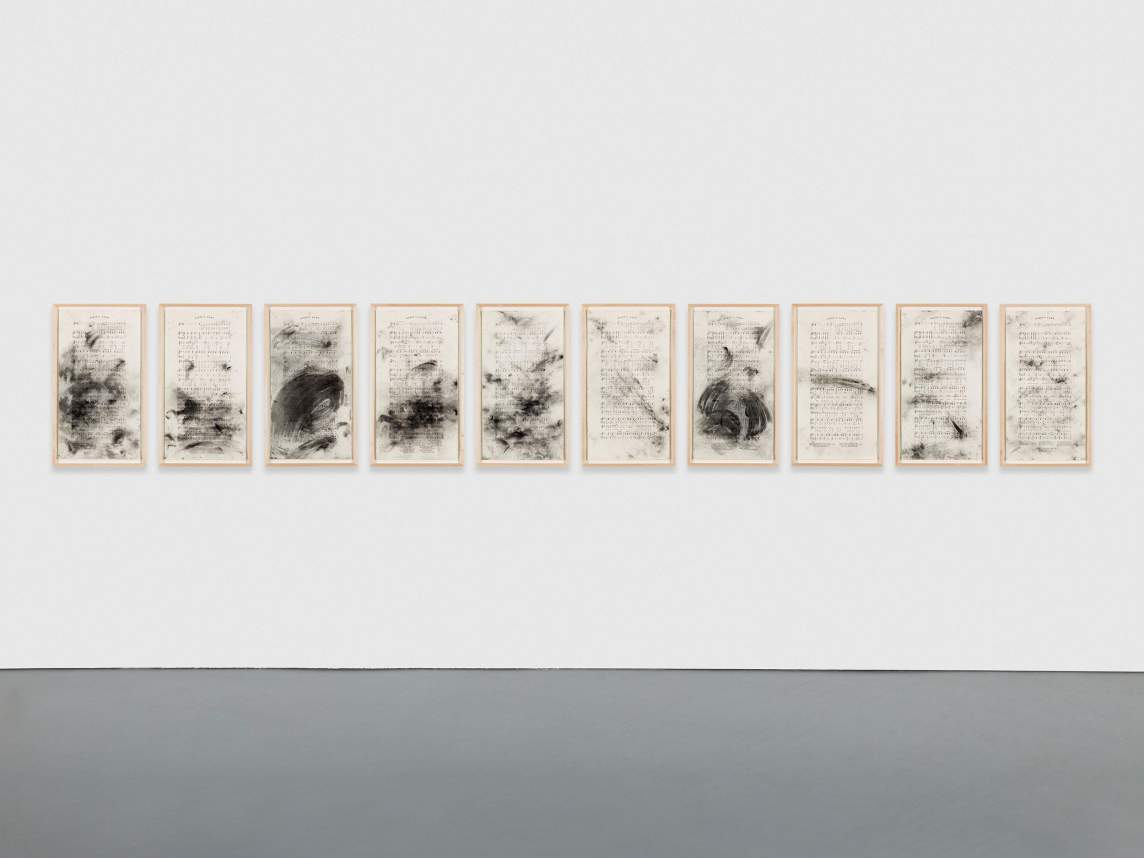
Most of the work that I've been making since 2016 has been grappling with an initial betrayal and the aftermath of a disaster—an end. Tell me, through the language of others, how to name the end. Describe it for me. There's a really nice text, One Hundred Apocalypses and Other Apocalypses by Lucy Corin, which illustrates how many ways—from the minute to the monumental—that the world we thought we knew can suddenly end and shake the ground beneath us. And yet, we live to write about it.
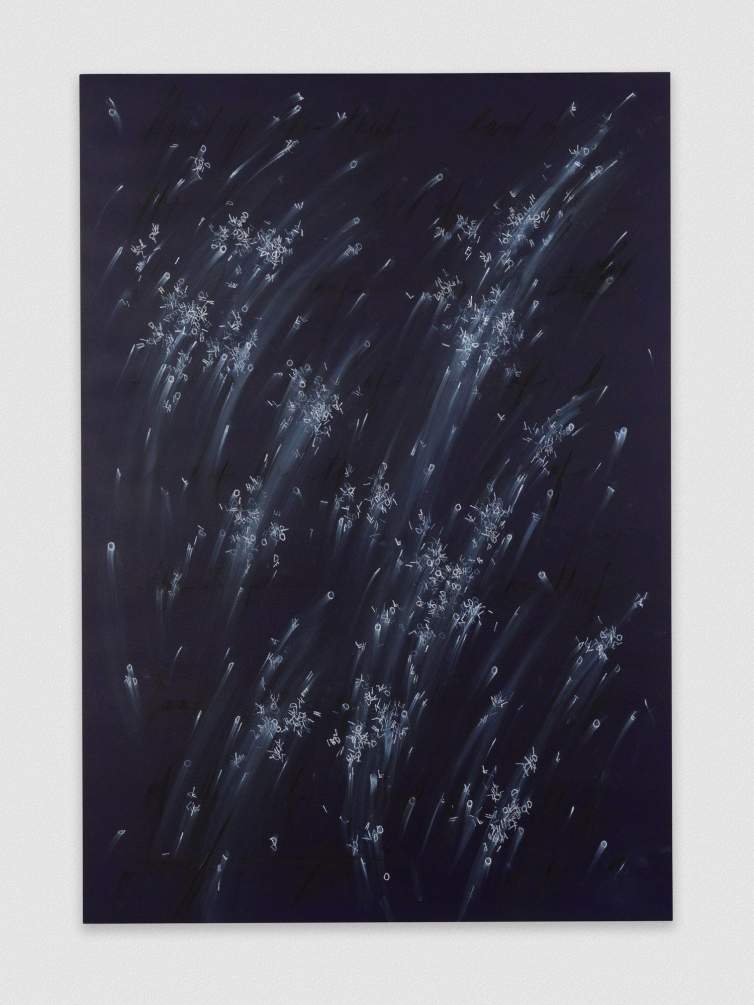
My practice is primarily drawing-based. Research is the foundation for each new series, but the material shifts, and the process shifts to suit the work. I'm more than willing to learn a new medium, or invite a collaboration, depending on what the work requires.
For example, I recently finished a series of artist books, hymnals, with For the Birds Trapped in Airports (a bookmaker in Los Angeles). The hymnals are based on patriotic anthems and the musical term “contrafacta.” Similar to contronyms, contrafacta are songs that retain the same melody, but their lyrics are rewritten over time by different authors, for different social, political causes. For the first hymnal, I bound a hundred versions of “My Country 'Tis of Thee” together. The second hymnal was a hundred versions of “The Star-Spangled Banner.” And the third and final hymnal, which I just recently finished, contains a hundred versions of “The Battle Hymn of the Republic.”

This series began immediately after the 2016 presidential election. I needed to reflect a kind of violent dissension and to remember that we have never been in full agreement. Burning the musical notation means that the unifying tune is now lost. It can no longer hold these dissenting versions of what it means to be American together. Instead, they are bound together in disagreement and unrest. All what's left is a hundred different versions of what it means to belong to this place.
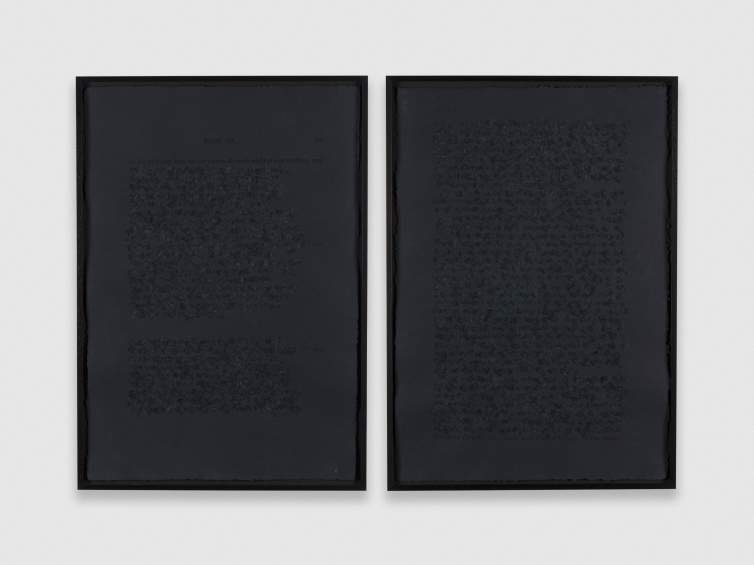
I just opened an exhibition at Bryn Mawr College. The show includes the first exhibition of the new hymnal, as well as works from The Odyssey and Aeneid series, which are all works about home and belonging and feeling like you're not quite in the right place. The show also includes three new performances, all based on “The Battle Hymn of the Republic” contrafacta.
The first performance paired 10 suffrage versions against one Confederate version of “The Battle Hymn,” all sung simultaneously. A contrast of aspiration and reality. The second performance was a chorus of sopranos sung by The Unsung Collective and built around an anti-war version of “The Battle Hymn,” by Mark Twain in 1901.
For the final performance, I did an open call for students to create an endurance singing of all 100 versions of “The Battle Hymn.” It lasted just over 4 hours. The endurance signings are sometimes beautiful, sometimes horrible. Often tedious. Every so often transcendent. But always a metaphor for democracy. It feels like there's nothing that can happen in the space of those performances that isn't metaphorical. Sometimes you're glad other people are there to bear it with you. Sometimes the room is empty, and no one's listening. Sometimes the tune is entirely lost. Everything becomes a metaphor for the long-suffering-ness of democracy.
Another work that came out of the Hymnal series was created for Promise, Witness, Remembrance, an exhibition centered on the life of Breonna Taylor at the Speed Museum in Kentucky in 2021. The audio work consisted of eight abolitionist versions of “The Star-Spangled Banner,” written in the 19th century. Sung by Elder Anton Seals, a version played at the end of every hour in the museum galleries. Elder Seals’ has a gravely, enduring voice. It felt appropriate that his voice would fill the galleries at the end of every hour, the end of time, like a church bell, reminding us of the end and the beginning, simultaneously.
Right now, I'm working on a new erasure series for my first show at Alexander Gray this Fall. This will be my third visitation of a classical text, following The Odyssey and The Aeneid. This whole year has been one of collaboration, with stone carvers, composers, and bookmakers.
Learning the language of other visual forms is quite satisfying. Working at the pace of others has been interesting—I'm trying to say that diplomatically. But collaboration has been my desire for this year—to work with the hands of others. I feel like by next year I’ll be saying, "Oh, this is the year for solo projects,” when I’m back to the studio by myself.
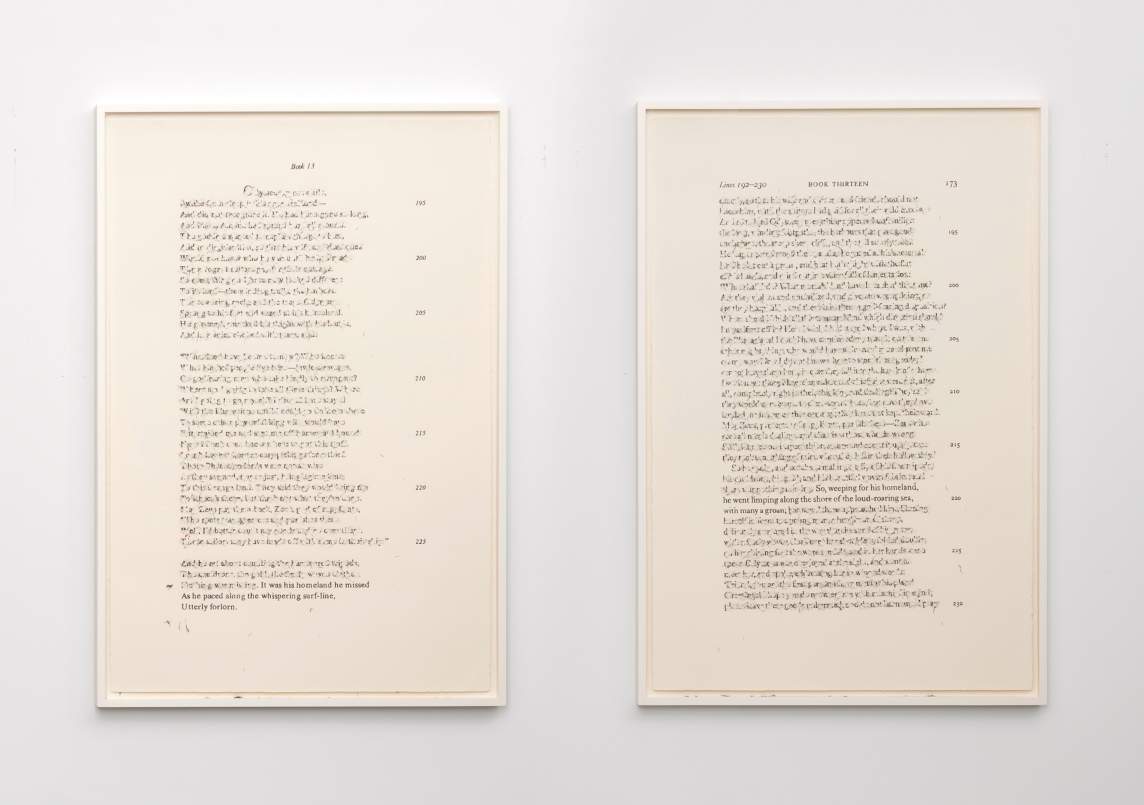
Interview and editing by Jenny Gill. Learn more about Bethany Collins’s work here.